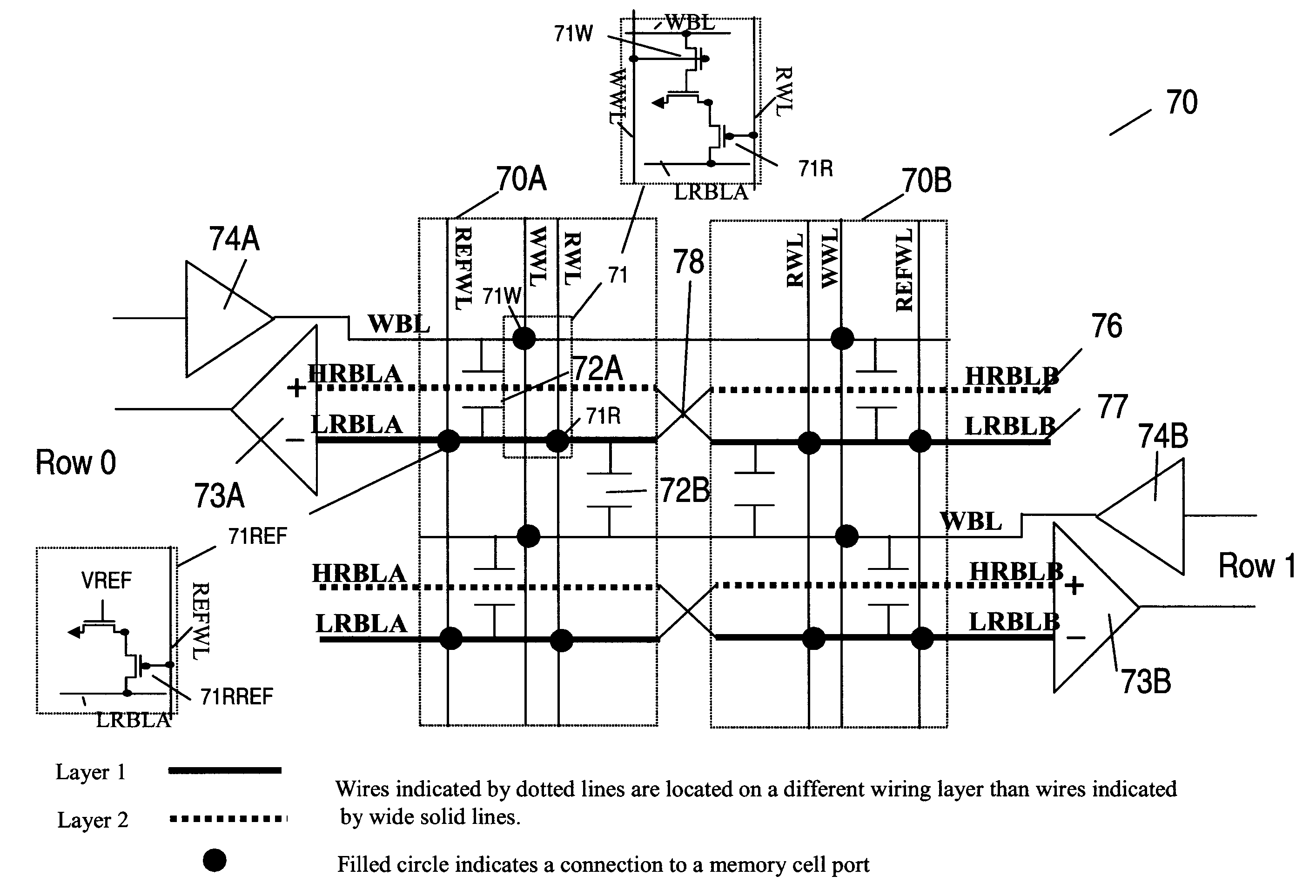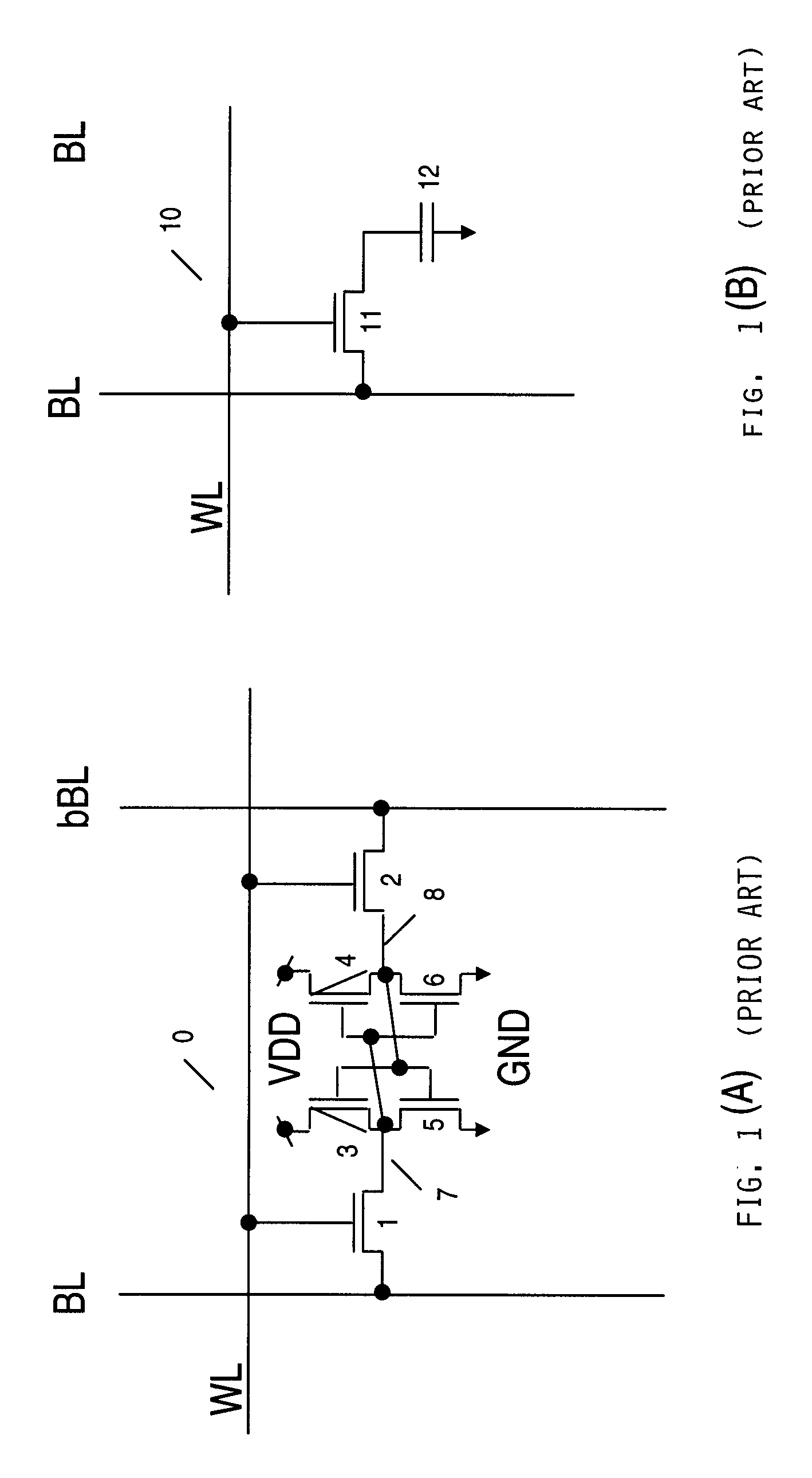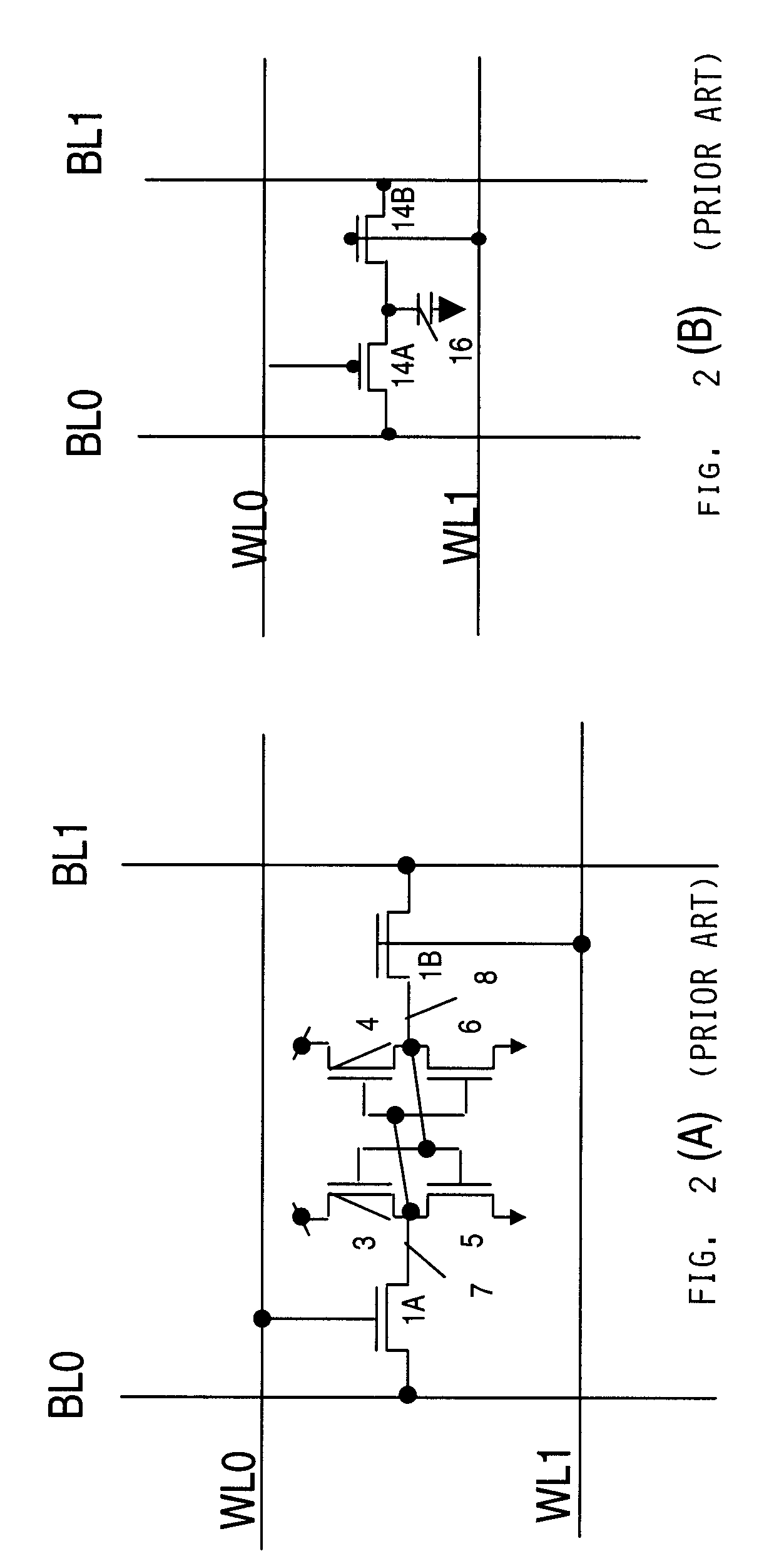Multi-port memory architecture
a multi-port memory and architecture technology, applied in information storage, static storage, digital storage, etc., can solve the problems of noise rendering simultaneous read and write operations difficult or potentially impossible, difficult or impossible to accurately sense the data bit being read, etc., to achieve accurate discrimination and low noise
- Summary
- Abstract
- Description
- Claims
- Application Information
AI Technical Summary
Benefits of technology
Problems solved by technology
Method used
Image
Examples
Embodiment Construction
[0029]FIG. 6 shows a first embodiment of the present invention which utilizes an open bitline configuration for the read bitline (RBLA in the array 60A and RBLB in the array 60B). Memory 60 consists of two arrays 60A and 60B, each containing a plurality of 3T gain cells 61 arranged in a matrix formation. Practitioners in the art will realize that other memory cells having two general ports or separate read and write ports may be used to configure the memory array to enable simultaneous read and write operations. Each memory array 60A and 60B includes a reference wordline REFWL that is coupled to reference cells 61R, each coupling to the corresponding RBLs (RBLA in the array 60A and RBLB in the array 60B). Different configurations of the reference cells may be used. For simplicity, REFWL in the array 60A and RWL and WWL in the array 60B are not shown.
[0030]When reference cell 61R is accessed, RBL in the activated array discharges to a level or at a rate that is at half-way the value ...
PUM
 Login to View More
Login to View More Abstract
Description
Claims
Application Information
 Login to View More
Login to View More - R&D
- Intellectual Property
- Life Sciences
- Materials
- Tech Scout
- Unparalleled Data Quality
- Higher Quality Content
- 60% Fewer Hallucinations
Browse by: Latest US Patents, China's latest patents, Technical Efficacy Thesaurus, Application Domain, Technology Topic, Popular Technical Reports.
© 2025 PatSnap. All rights reserved.Legal|Privacy policy|Modern Slavery Act Transparency Statement|Sitemap|About US| Contact US: help@patsnap.com



